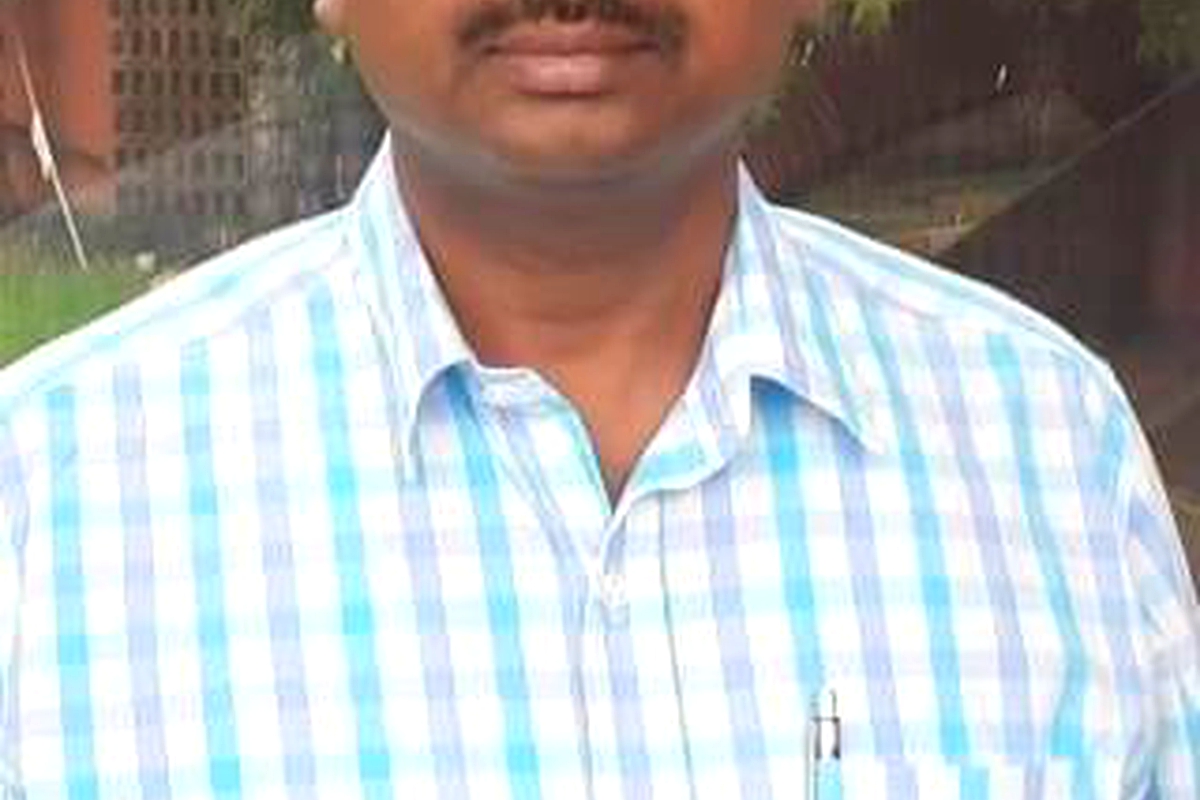Yes, the compound has been reported as new in the world of science! The name of the compound itself will break your tongue. But let’s try: 24,31-epoxy-24-ethylcycloartan-3α-ol. “We spent years working on this project. We spent weeks just to come up with this long name,” said the National University of Lesotho lecturer, Dr Manoharan Karuppiah Pillai. Dr Pillai works so hard that he publishes a string of amazing papers within a very short time. Like most serious scientists, you should consider yourself very lucky to get even three seconds of his time.
society
March 2, 2020
4 min read
NUL lecturer and team discover a new compound

NUL Lecturer, Dr Manoharan Karuppiah Pillai
But, what is this compound? Okay, we already know that its name is 24,31-epoxy-24-ethylcycloartan-3α-ol. When we told some people about this compound, they replied in Sesotho, “Le uena haeba ke tlhapa!” They were saying, “We return it if it’s an insult!”
We understand, this 30-character word is baffling!
To complicate matters further, listen, for a moment, to how they reported their findings to other scientists in the “Chemistry of Natural Compounds Journal”, volume 55, issue 6, pages 1085–1089, “A new cycloartane-type triterpenoid”, 24,31-epoxy-24-ethylcycloartan-3α-ol was isolated from the rhizomes of Polygonum bistorta. The structure of this compound was elucidated using a combination of 1D and 2D NMR spectroscopic techniques and HR-EI-MS analysis.”
Enjoy our daily newsletter from today
Access exclusive newsletters, along with previews of new media releases.
This compound is found in a plant called “Polygonum bistorta,” it’s a scientific name. Don’t get angry with us for quoting another tricky name, because this plant is simply known as Snakeweed in English. However, scientists have a way of complicating otherwise simple things, such that they can communicate only amongst themselves, because, as they say, science is not English.
And English is not science.
“This plant is used widely in Indian, Chinese and Japanese traditional medicine,” the good Doc said. “It is used to treat a whole battalion of deceases including measles, small pox, insects and snake bites, jaundice, and pimples.” It has been argued that especially the rhizomes (roots) of this plant have many active substances that have majority of the medicinal properties.
Now, Dr Pillai and his team were particularly interested in testing the anti-cancer properties of this plant. “Over time, we came to a conclusion that this plant may have potential as being anti-cancer,” he said.
How did they know? They isolated and identified many compounds found in this plant, especially in the rhizomes (roots). Many of the compounds they found had already been identified previously. But then, oops! They noticed a strange substance that resisted identification. Dr Pillai and his team knew they were on to something.
“We didn’t work on this new substance immediately,” he said. Remember, their objective was to check the anti-cancer properties of this plant, not to discover a new compound. “So we put work on this substance on hold.” When they finished with their work then they came back.
As any scientists will appreciate, identifying and confirming something new is not easy. “You can actually do your whole PhD thesis research work on finding new compounds,” Dr Pillai said.
So, they found that the compound was a penta-cyclic- triterpenoid.
Okay, if scientists make things complicated, we make things simple. So what is this? You know penta mean five eh? Yes. And cyclic means something that is circular? So this compound has five rings (a ring is circular—the married ones know this).
But what is triterpenoid?
“It is a class of organic compound,” Dr Pillai said. “For instance, we have monoterpenoids which have 10 carbons, we have diterpenoids which have 20 carbons and we have triterpenoids which have 30 carbons.”
So how did they identify this strange compound?
They first had to isolate the compound. They used chromatography in many forms such as Column Chromatography and High Performance Liquid Chromatography (HPLC) to get the pure compound. Then they used Thin Layer Chromatography to confirm the purity of the compound.
Don’t worry if you didn’t get that part. You can still sleep at night knowing fully well that you didn’t miss much.
To get the structure of the compound, they then used Magnetic Nuclear Resonance (NMR) in its many forms 1H NMR, 13C NMR, 2D NMR such as HMBC, COSY, HSQC-DEPT, and NOESY.
Again, you can still sleep at night knowing fully well that you didn’t miss much.
Dr Pilliai said he has done this work in collaboration with his mentors at the National University of Singapore, "whom I give so much credit," he said.
Tailored for you






